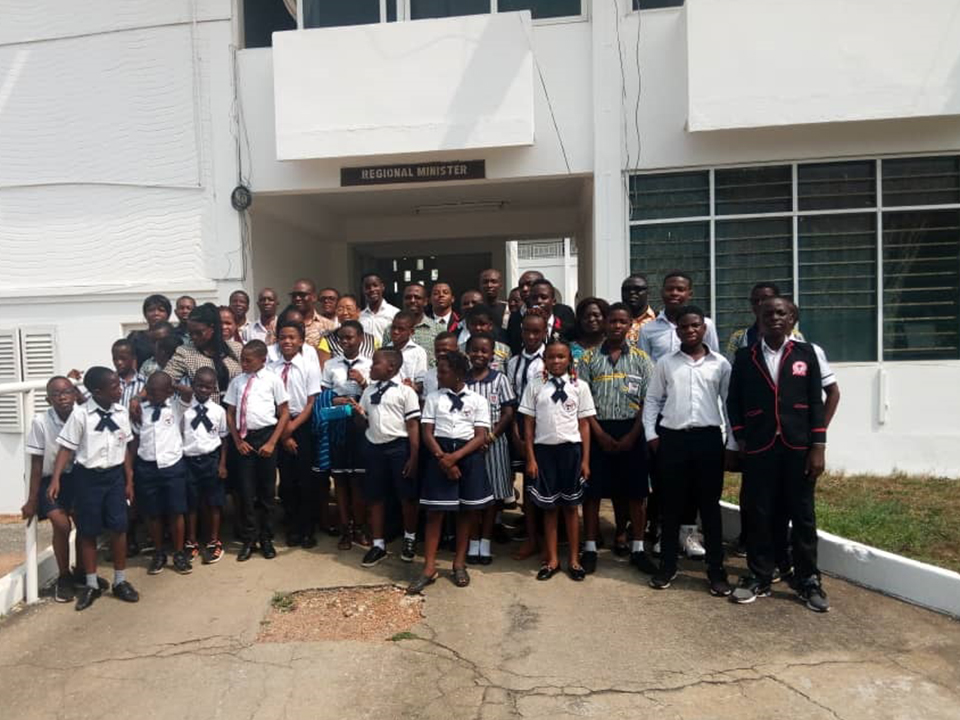The Chairman of the University Governing Council, Mrs. Nancy O. C. Thompson, has challenged the 2017/2018 graduands of the University to be pioneers of innovations after as they enter the field of work.
“With the knowledge and competencies you have acquired, I challenge you to have big dreams, to be pioneers of innovations that can change Ghana and the world at large,” she urged them. She told the graduates, that the days of excuses were gone and, therefore, intellectually endowed young men and women of their calibre were needed to turn the future of the country around with their talents.
2nd to 4th Sessions of Congregation
The Chairman of the Governing Council was speaking at the Second Session of the 51st Congregation dedicated to the College of Education Studies held at the New Examinations Centre. The Third and Fourth Sessions were also dedicated to College of Agriculture and Natural Sciences and the College of Health and Allied Sciences
Be Agents of Positive Change
Mrs. Thompson reminded the graduands that, the future of Ghana in particular and the world in general was in their hands so they should do everything possible with the knowledge they had acquired from UCC and their God-given talent to make a positive change as they move to the next stage of their life. “I have no doubt that some of you seated here under the sound of my voice are capable of making the aspirations of our country become a reality,” she indicated.
Mrs. Thompson urged them to be worthy ambassadors of UCC wherever they go. She used the opportunity to encourage them to take keen interest in alumni activities and reminded them to give back to the University.
Statistics of 2nd to 6th Sessions of 51st Congregation
The Vice-Chancellor, Prof. Joseph Ghartey Ampiah, in his address stated that a total of 5, 727 graduands were to be presented with certificates, diplomas and degrees during the Second to Sixth Sessions of the 51st Congregation.
Collaborations and International Relations
On collaborations and international relations, he said in order to open new gateways for knowledge, research and academic exchange the University had entered into partnership with several institutions. He indicated that, the Directorate of Research, Innovation and Consultancy (DRIC) through the School of Agriculture was coordinating the implementation of the Academic Mobility Project (ACADEMY) with sponsorship from the European Union. “The ACADEMY Project seeks to provide scholarships for the study of specialised Masters/Doctorate Degree programmes in various disciplines in the partner Universities and also provide capacity building opportunities for staff of partner Universities,” he explained.
Prof. Ampiah reported that the Directorate of Academic Planning and Quality Assurance (DAPQA) collaborated with 15 universities both in Europe and Africa to respond to the 2018 KA2. He said the project was aimed at bringing together the consortium to work together to improve quality assurance systems in African universities.
Awards
In terms of awards the Vice-Chancellor said UCC received an award from Kennesaw State University, USA for being its best partner. He mentioned that UCC Sports Team won the Totem Trophy with 38 gold medals during the 25th GUSA Games held at the University for Development Studies, Tamale. The Vice-Chancellor announced that UCC Debators’ Society emerged the overall winner of the 2018 edition of the Africa Debate Championship, with universities from Ghana, Nigeria, Zimbabwe and Sierra Leon participating.
Research Activities
On research activities, the Vice-Chancellor said DRIC continued to put in place diverse but complementary interventions in the area of research. He noted that DRIC in conjunction with the Office of the Vice-Chancellor officially launched the maiden research report and Industry and Innovation Unit in February 2018. He indicated that as part of the launch, a workshop and an innovation fair were held for industry players.
Appreciation
The Vice-Chancellor expressed gratitude to Essyllabus for Africa, Tertiary Education Scholarship Trust (Test-Ghana), Students’ Loan Trust Fund (SLTF), Barclays Bank, Standard Chartered Bank and Uturn Africa for offering sponsorship packages to UCC students. He also appreciated the contributions of Prudential Bank, GCB Bank, Zenith Bank, ADB Bank, Japan Motors, and Societe Generale for sponsoring various activities of the University. He acknowledged the hardworking faculty and staff for their immense contributions to the development of UCC.
Overall Best Graduating Student
Mr. Godwill Higienus a Bachelor of Science in Agriculture student with a CGPA of 3.9357was the Overall Best Graduating Student for the 51st Congregation. He received the Chancellor's Prize of GH C1, 500 at the ceremony.




